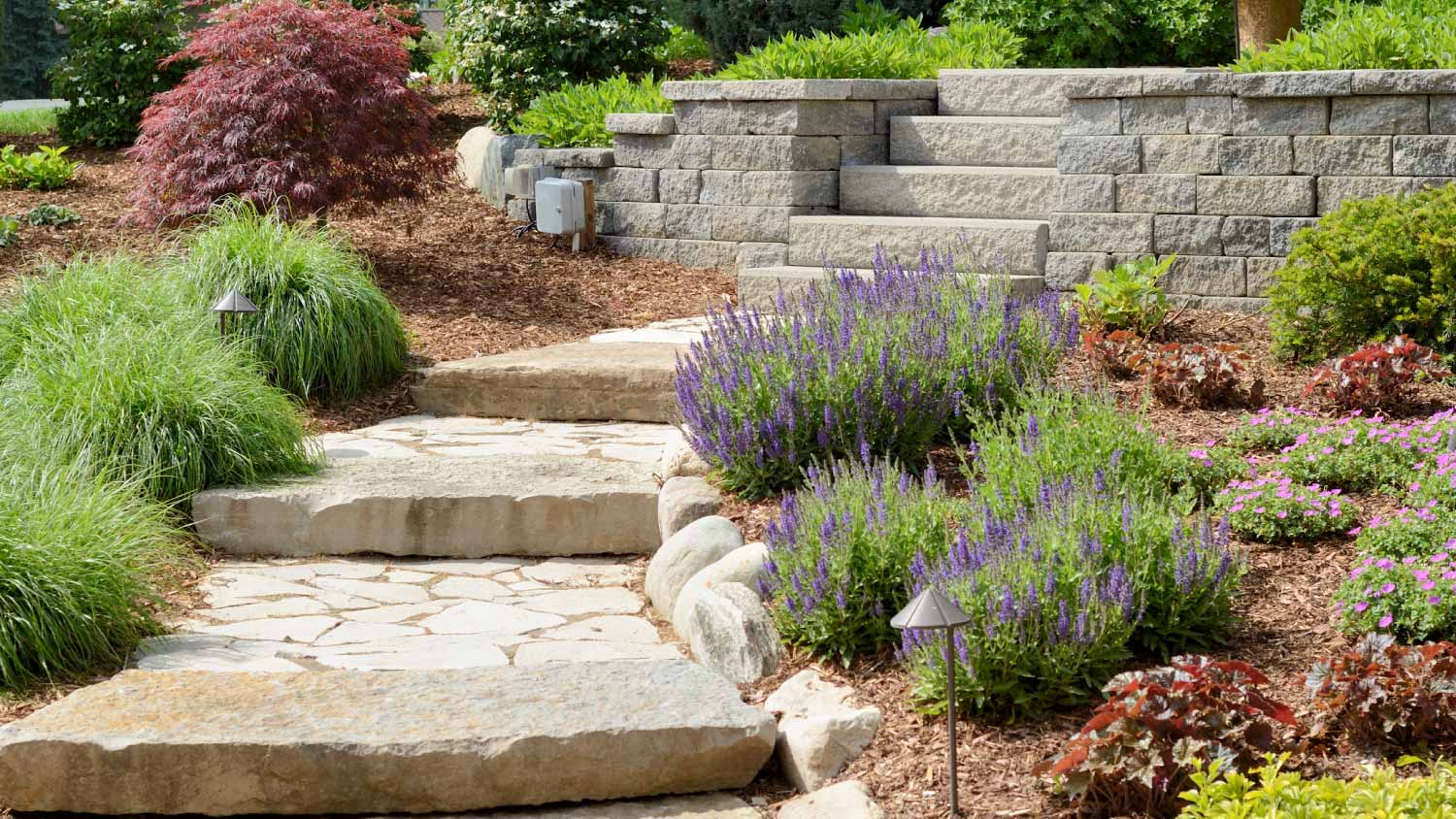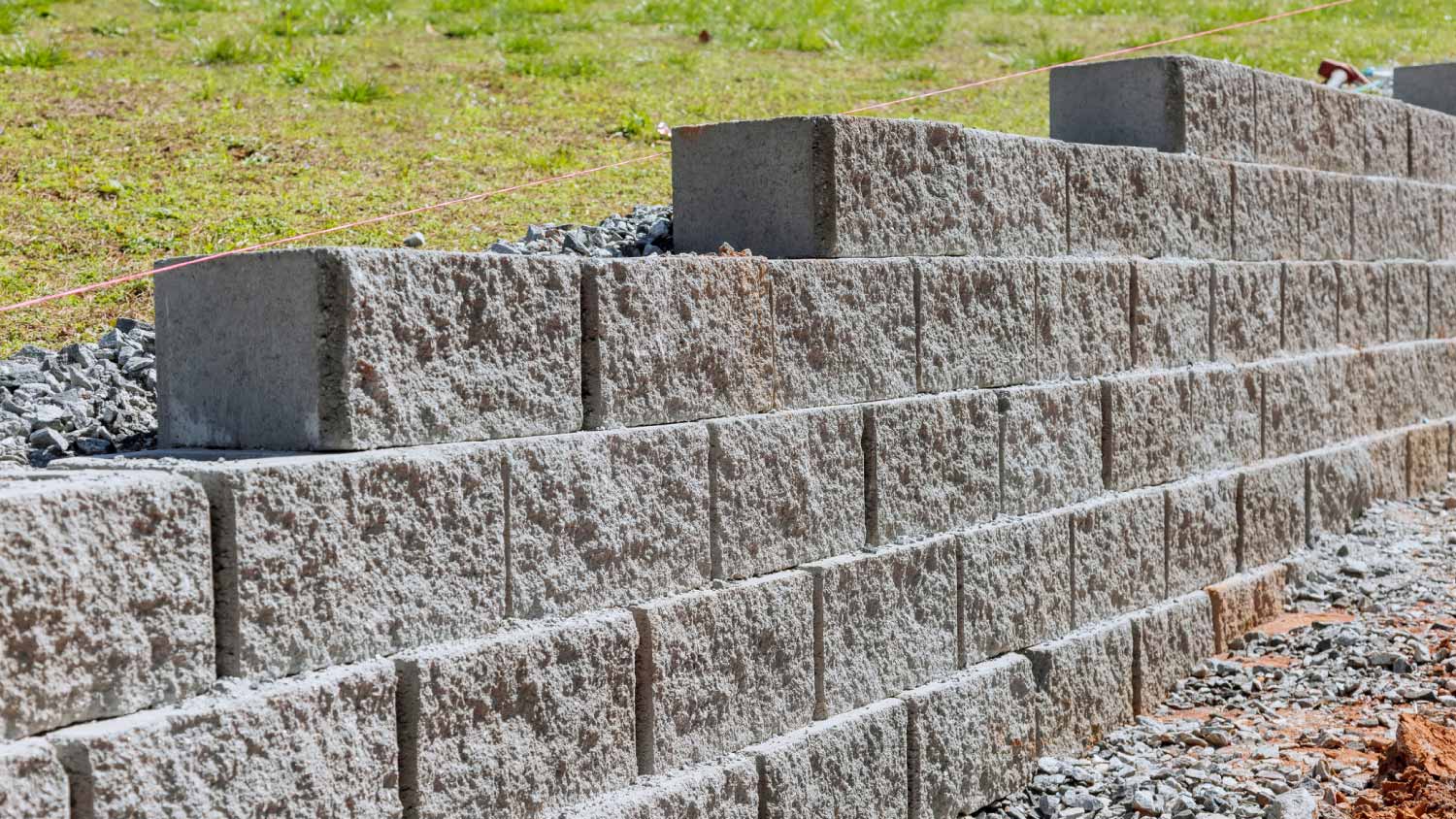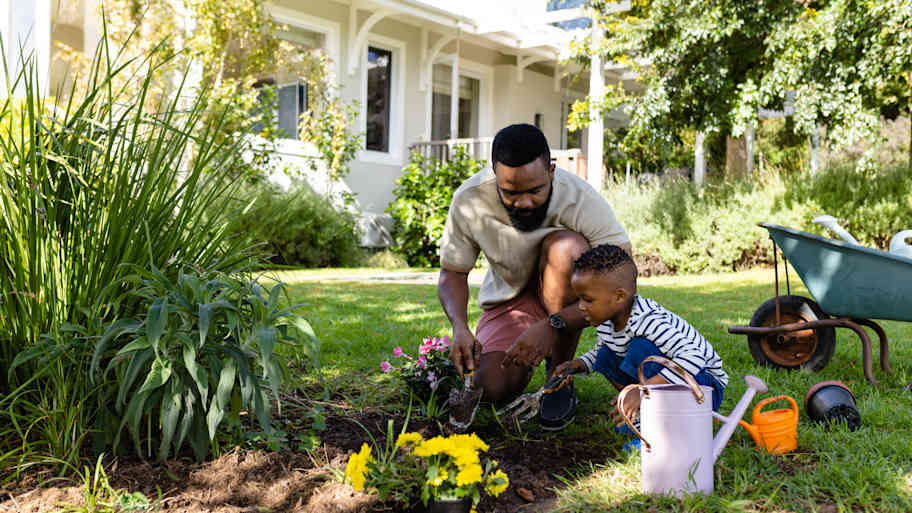
Railroad tie retaining wall costs can vary widely, so getting an accurate estimate for your needs is a good idea to set your budget appropriately.
These pros make hardscapes easy


A licensed landscaping contractor is the ideal pro for installing a block wall because they offer structural and visual design expertise. Landscapers also know how to integrate hardscape elements with softscaping, such as plants and grass, making your entire property look cohesive and beautiful. Here’s our landscaper hiring guide for block walls.
A local landscaper is the best choice for installing a block wall because they have training and expertise in landscape design, so they can ensure maximum structural integrity and a good-looking result. Landscapers have experience with grading, excavation, and installation, so your block wall will have proper drainage and prevent soil erosion. They also know how to integrate hardscape elements with soft scaping, such as plants and grass.
A masonry contractor specializes in building and repairing structures with stone, brick, and concrete, including chimneys, patios, and block walls. They ensure structural integrity and aesthetics, but not all masonry contractors specialize in retaining walls.
Look for a local masonry contractor with experience in block walls (some masons only focus on interior builds and restorations, such as brick fireplaces and stone steps). A masonry contractor isn’t an expert at considering the complete picture of your property and integrating the block wall with your other landscaping elements, such as plants and trees.
Installing a block wall takes careful planning and execution to ensure it offers proper structure and drainage. Here are the steps a landscaper takes to build a block wall.
Plan and prepare the site: A landscaper surveys the area and marks the location for the block wall, planning details such as slope, drainage, height, length, and shape. A licensed landscaper will consider frost lines and follow local guidelines to ensure the wall meets building codes.
Excavate: A landscaper digs a trench for the base of the block wall, ensuring it is deep enough to support the height. They also compact the soil for a firm base.
Lay the base layer: A landscaper installs a layer of draining material in the trench, such as gravel, to create a solid foundation.
Place and secure the blocks: For each row, a landscaper levels the blocks, makes cuts, and staggers the joints. They also apply concrete adhesive and backfill with gravel for stability.
Install a drainage pipe: A landscape pro may install a drainpipe to channel water away from the base.
Cap the wall: A pro adds capstones to protect the wall and give it a polished look.

The cost to build a block wall is $3,200 on average, but it depends on the size, type of block, and labor costs in your area. Split-face blocks that resemble natural stone fall on the higher end, while standard cinder blocks clock in at the lowest price point.
Installing a block wall requires careful structural design, a lot of hard work, and proper construction tools and equipment. A block wall should provide drainage, prevent soil erosion, and withstand all types of weather. A licensed landscaper near you will ensure the job is done right. Learning to build a block wall by yourself takes time to understand the design, excavation, and construction process, not to mention the heavy lifting and possible risk of injury.
From average costs to expert advice, get all the answers you need to get your job done.

Railroad tie retaining wall costs can vary widely, so getting an accurate estimate for your needs is a good idea to set your budget appropriately.

Looking to step up your golf game without leaving your property? This guide details backyard putting green costs to help you decide if this project is worth it.

How much does hardscaping cost project by project? Check out our breakdown for every price tag you need to know, from outdoor fireplaces to patios.

There are reasons to grade or slope your yard beyond aesthetics—drainage is the main one. Read on and learn how to have an informed discussion with your pro.

While similar, comparing dirt versus soil comes down to what's inside the material, its usefulness, and how it performs, depending on how you intend to use it.

Most homes in the United States aren’t adequately accessible, but you can create a wheelchair-accessible backyard with some simple planning.